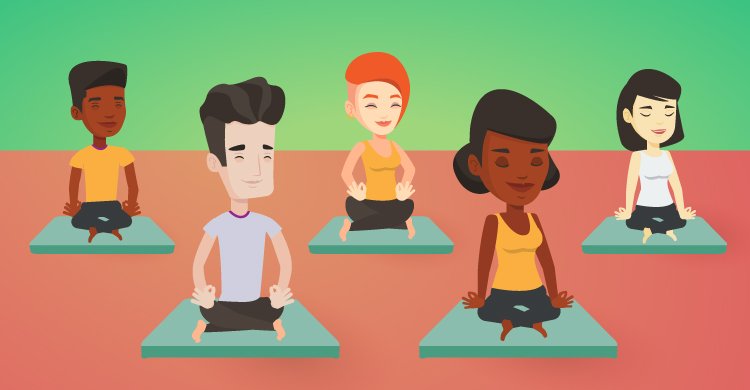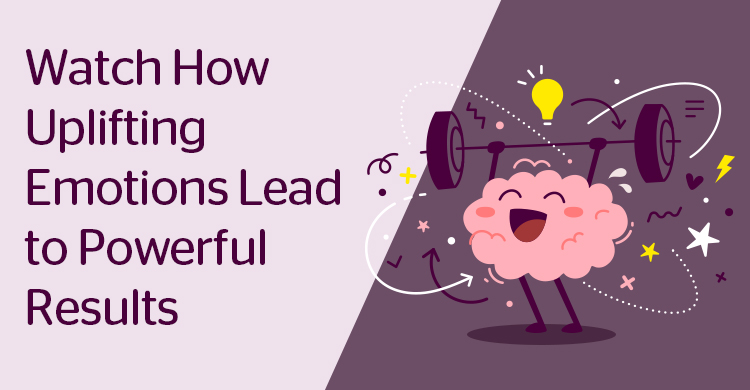A few nights ago, I was sitting on the couch with my wife, Missy, when our four children slowly made their way into the living room. Our lives are so busy with three teenage girls and an eleven-year-old boy that we rarely find time to all just “be together” these days. Emily, our oldest, came and sat on the floor so she could get “mommy scratches” while she played on her iPhone. Mattie, our second oldest, was across the room. She had placed her laptop on the piano bench with a video of dancers from the musical Beauty and the Beast, and she danced along, practicing moves.
Katie, our third girl, was on the opposite couch with her guitar. She was playing a version of “Hello from the Other Side” while Emily was humming harmonies along with her. And then there was Jack, with a snack of cheese crackers on the table. With a cracker in his mouth, he was everywhere: sometimes carrying his basketball, moving it between his legs or bouncing it. Or he’d sit on the couch and hum along with the music and then jump back up for another cracker.
Somehow, each one of them was in his or her solitary world while sharing the same moment. I just sat back, holding Missy’s hand, soaking in the moment and feeling an overwhelming sense of gratitude.
Older parents tell me to savor these times because they won’t last for long.
The Power of Mindfulness
Later, as I thought about this sweet moment, I was reminded of a recent conversation I heard between Tim Elmore and Britt Andreatta on The Growing Leaders Podcast. Dr. Andreatta is the author of Wired to Grow as well as her newest book, Wired to Resist, which was just published (Andreatta, 2015).
Her first book explores the ways learners thrive when adopting patterns that encourage brain engagement. But her second book looks at the instinctive resistance that happens in our brains when confronted with change. In her interview, she explained how organizations that implement change face pressures and difficulties that come with any change initiative. Her research has shown ways leaders can help their teams through change by the following practices:
- Acknowledging that change is disruptive
- Nurturing by dialing up self-care
- Creating a team experience for change
- Practicing mindfulness
I just ordered Dr. Andreatta’s new book, so I’m looking forward to exploring each of those takeaways. But I was especially intrigued by her comments on mindfulness. She explained that mindfulness helps you keep perspective and maintain a positive outlook. As a result of her own research, she has begun mindfulness practices (like meditation) that have changed her own outlook on change (Andreatta, 2017).
Mindfulness is a common topic in the psychology of human development. The dictionary defines it like this:
mind·ful·ness
ˈmīn(d)f(ə)lnəs/
noun
1.
the quality or state of being conscious or aware of something.
2.
a mental state achieved by focusing one’s awareness on the present moment, while calmly acknowledging and accepting one’s feelings, thoughts, and bodily sensations, used as a therapeutic technique.
In a 2015 Psychology Today article, “What Is Mindfulness and How Does It Work?” Dr. Gregg Henriques says, “It is readily arguable that the single most significant development in mental health practice since the turn of the millennium has been the widespread emergence of mindfulness-based approaches” (Henriques, 2015).
Although much of the research on mindfulness tends toward meditation and other thought-practices, educators tend to apply similar ideas of “being in the moment” to the ways we can embrace learning for ourselves and for students.
Educators are not just talking about mindfulness; they are also talking about mindset as well. For example, Mindset, by Carol Dweck, and the Innovator’s Mindset, by George Couros, are two recent examples of a researcher and a practitioner who show direct correlations between how our thinking about growth and openness to learning significantly affect outcomes for learning (Dweck, 2016; Couros, 2015).
Whether you’re discussing mindsets or mindfulness, the way we think affects the way we learn and lead. But why is mindfulness such a powerful practice for those of us in educational leadership? I’ll let the experts explain the research, but I believe an important takeaway in my practice can be summed up this way:
Your ability to recognize simple and amazing moments can result in deeper levels of gratitude, motivation, reflection, and action.
A Beta-Test Update
Let me explain how mindfulness plays a part even in the tasks of scheduling and implementing change. This past semester, we decided to begin testing out some remediation schedules for next school year. I’m really proud of the work our scheduling team has done, as well as the courage our teachers have shown in being willing to trial-run two different remediation schedules. Our goal has been to see if we can focus a concentrated time within the day to work with students still struggling with essential skill areas.
At the same time, this trial run has also had challenges. We have disrupted our normal schedule by taking away a few minutes from each class period, in order to focus a 25-minute block of time for these focused remediation times. One of the results has been the inevitable pushback and pressure that comes with change. But the good news is that we’ve been able to test, tweak, and retry for practices we’d like to use next school year.
Another challenge has also been keeping the pros and cons in perspective. Frankly, I also have had to keep reminding myself that both positive and negative feedback can be constructive. From a leadership perspective, I can also say it’s been hard to keep those ideas in mind during the midst of the work involved in piloting these ideas. That’s where mindfulness helps.
Junior/Senior Prom Night
This past weekend, I went to our school prom with these thoughts on my mind. I’ve been a school administrator since 2004, so this would be the thirteenth year that I have supervised a prom. Having a daughter who is a senior, however, also adds a new perspective to the experience.
It had been a stressful week, so I wasn’t sure if prom was going to add to the stress or not. The evening began like most others: girls in beautiful gowns and boys in tuxes; lots of finger foods, soda, and bottled water; loud music and lights. But one aspect was much different this year: we had a fantastic DJ who not only picked great music, but he loved to dance.
He would jump down from the stage onto the dance floor, microphone in hand, and teach the students a line dance or some new moves. He would alternate genres and artists. There was so much laughter, fun, and singing, the atmosphere was contagious. Even some of teachers joined in. I don’t think I’ve ever seen so many students stay on the dance floor for so long. The DJ kept the evening fun without it deteriorating into inappropriate dance behavior.
I was walking around taking photos. At one point, however, I decided to just pull up a chair, sit back, and take it all in.
Students from different backgrounds, income levels, and interests were mingling together in one big group: couples dancing, groups of girls holding hands, other students circled around single dancers showing off their moves. At one point, I saw our senior-class president (who was recently accepted at West Point) make his way over to a girl who is one of our special-needs students. He had asked her to dance, and they were both beaming as the moved beneath the cascading colors purple, blue, and gold showering the room from the spinning disco ball overhead.
As I took in the scene, suddenly I began to have the same feeling I have when watching my own children play: an overwhelming sense of gratitude. I smiled. This is why we do it, I thought. Whether it’s academics or activities, these amazing young people make the hard work of being an educator so worth it.
Let’s Wrap This Up
How does mindfulness affect our leadership? I know you could tell me stories from your last few weeks of school—stories just like my own about challenging scenarios or the stress that comes with school leadership. You could talk about the steps you’re taking to plan out ideas for next year’s schedule, or the new technologies you’re planning to use. These are important parts of your school that require teamwork, collaboration, and leadership. But the strategies, goals, and to-dos of education always seem more bearable when you can remember the why behind the work of education and school leadership.
When I think about the night watching my own children, I can still picture my eighth-grade daughter sitting on the couch with her hair pulled back in a bun with little curls finding their way out as she concentrates on bar chords and sings. I can still see Mattie’s graceful poise, long arms and legs twirling and spinning.
I can practice a form of mindfulness and remember why the hard work of parenting is so worth it. And you can practice the same mindfulness as it applies to school leadership—just like sitting back at our prom and enjoying those students like I enjoy my own children.
So this week, let me encourage you to pause for a moment in your busyness and take stock of what’s right in front you. Don’t ignore the challenges. At the same time, how can you find the joy in better moments of your day? Savor them. They don’t last long, but they can serve as powerful motivation to keep serving.
Now It’s Your Turn
What are the positive experiences surrounding you right now that you can acknowledge and celebrate? How can you take action today toward mindfulness in your work? How can you make the most of “being in the moment” this week?
Podcast Version
Go here to listen to an audio version of this post: Play in new window | Download
References:
Andreatta, B. (2015). Wired to Grow: Harness the Power of Brain Science to Master Any Skill. Santa Barbara, CA: Seventh Mind Publishing.
Andreatta, B. (2017). Wired to Resist: The Brain Science of Why Change Fails and a New Model for Driving Success. Santa Barbara, CA: Seventh Mind Publishing.
Couros, G. (2015). The Innovator’s Mindset: Empower Learning, Unleash Talent, and Lead a Culture of Creativity. San Diego, CA: Dave Burgess Consulting, Inc.
Dweck, C. S. (2016). Carol Dweck’s Mindset: The New Psychology of Success: Summary. Place of publication not identified: Ant Hive Media.
Henriques, G. (2015, February 06). “What Is Mindfulness and How Does It Work?” Retrieved April 29, 2017 from https://www.psychologytoday.com/blog/theory-knowledge/201502/what-is-mindfulness-and-how-does-it-work.
[author_bio id=”1360″]







